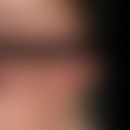Synonym(s)
HistoryThis section has been translated automatically.
Hebra 1860
DefinitionThis section has been translated automatically.
Rare disease with appearance of follicular, lichenoid papules in hyperergic immune state. Expired organ tuberculosis is occasionally reported. Failure of the tuberculin response is uncharacteristic.
You might also be interested in
Occurrence/EpidemiologyThis section has been translated automatically.
Variable prevalence of 0.1% of cutaneous tuberculosis in Japan v.s 33% in India (Gramminger C et al. 2025).
EtiopathogenesisThis section has been translated automatically.
Tuberculoid. Unclear pathogenesis. Systemic tuberculosis can be detected in 72% of patients. The occurrence after vaccination has also been reported (Gramminger C et al. 2025).
ManifestationThis section has been translated automatically.
LocalizationThis section has been translated automatically.
Especially the side parts of the torso.
ClinicThis section has been translated automatically.
Symmetrically arranged, disseminated or grouped, always follicular or perifollicular, pointed conical, yellow-brown, reddish or skin-colored, lichenoid, mostly scaly papules, sometimes solitary, sometimes confluent. The follicular papules heal without scarring!
HistologyThis section has been translated automatically.
Perifollicular or follicular tuberculoid structures: Langhans giant cells, small foci of necrosis. No mycobacteria detectable or growable.
DiagnosisThis section has been translated automatically.
Positive tuberculin reaction. Culture from lesional tissue is negative.
Differential diagnosisThis section has been translated automatically.
External therapyThis section has been translated automatically.
Internal therapyThis section has been translated automatically.
Progression/forecastThis section has been translated automatically.
The disease develops slowly. Usually regression after a few weeks/months. Recurrences are possible.
LiteratureThis section has been translated automatically.
- Gramminger C et al. (2025) Recognizing cutaneous tuberculosis. J Dtsch Dermatol Ges 23:793-802.
Joshi HS et al (2014) Lichen scrofulosorum. BMJ Case Rep:bcr2013200858. doi: 10.1136/bcr-2013-200858.
- Orfanos C (1970) Tuberculosis of the skin.in: HA Gottron et al. (Eds.) Dermatology and Venereology. Georg Thieme Verlag, Stuttgart, pp.316-318
- von Hebra F, Kaposi M (1860) Lichen scrofulosorum. In: Textbook of skin diseases. Volume 1, Enke, Erlangen, p. 198
- von Hebra F (1868) Lichen scrofulosorum. In: Fagge CH, Pyesmoth PH (eds.) Diseases of the skin. Volume 2, New Sydenham Society London, p. 58
Incoming links (4)
Lichen nitidus; Lichen planus follicularis; Lichen scrophulosorum; Tuberclides, lichenoid;Outgoing links (12)
Chemotherapeutics; Glucorticosteroids topical; Hyperkeratosis follicularis caused by avitaminosis c; Id reaction; Keratosis pilaris; Lichen planus follicularis; Mycobacteria; Papel; Prednicarbate; Sarcoidosis of the skin; ... Show allDisclaimer
Please ask your physician for a reliable diagnosis. This website is only meant as a reference.








